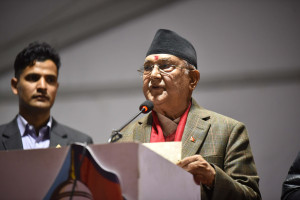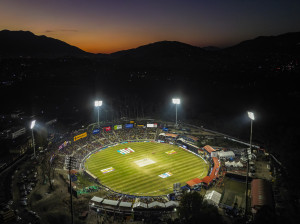Editorial
The move to push UNESCO to withdraw from the project to restore temples in Basantapur makes no sense
Foreign cooperation can be a big help in heritage restoration..jpg&w=900&height=601)
It is worrying that UNESCO, the United Nations body that deals with heritage conservation, has been forced to withdraw from the project to restore the Jagannath and Gopinath temples in Basantapur. The organisation had been consulting with local conservation experts and coordinating with the Department of Archaeology to restore the temples. It had even assured the community of hiring local artisans and workers for the actual reconstruction. However, it seems that ‘some local groups’, and Province 3 assembly member Rajesh Shakya in particular, put pressure on UNESCO to withdraw.
The arguments behind pushing for UNESCO’s ouster do not make any sense. Apparently, Shakya wants the temples, which fall under his electoral constituency, to be rebuilt by Nepalis, without any international involvement. But UNESCO’s expertise in heritage conservation, and its promise to use local craftspersons and masons, completely justifies its involvement. Moreover, blindly putting faith in politicians and the government is not enough to ensure proper conservation and reconstruction.
The temples in question are among the 140 buildings within the World Heritage Sites in the Kathmandu Valley that were damaged during the 2015 earthquake. And even though it has been over four years since the major disaster, the temples, and many others like it, remain in their destroyed and damaged state. As a focal point for the local communities, and as a significant draw for tourists, it is essential that the monuments are built in haste. The need to reconstruct the heritage sites in the valley expeditiously is particularly strong now, since Nepal is attempting to attract large tourist numbers with its Visit Nepal 2020 campaign. Yet, such illogical manoeuvres will most likely further delay the reconstruction schedule. And, as UNESCO country representative Christian Manhart warned, such pressuring is likely to affect donors’ willingness to engage with Nepal in the future.
While it would indeed bring great pride to all Nepalis if the reconstruction process were entirely funded and completed using domestic resources alone, such a move wouldn’t be prudent. Foreign expertise, combined with local practices and knowledge, especially in seismic strengthening and heritage construction, would benefit Nepali monuments in the long run. UNESCO is an organisation that especially carries weight in heritage and preservation matters, and is in a position to attract and consult with the right experts and builders—both local and foreign.
Mayor Bidya Sundar Shakya’s promise to rebuild Rani Pokhari and the Balgopaleshwor Temple with local resources and expertise, only to push through anti-conservation plans and building practices, shows how dangerous it is to leave such sites at the mercy of people who do not care about the heritage and culture aspects. Moreover, the hit to domestic coffers on such projects is large. There is nothing wrong with using donor funding, especially when traditional building practices and local consultations are ensured. The successful restoration and seismic retrofitting of Gaddi Baithak, using US funding and foreign expertise, is a case in point. The Province 3 government has set Rs10 million aside from its own budget to restore the Jagannath and Gopinath temples. Had UNESCO been allowed to continue with the project, which Japan was partially funding, Province 3 could have used that money for something else, like strengthening education or healthcare.
***
What do you think?
Dear reader, we’d like to hear from you. We regularly publish letters to the editor on contemporary issues or direct responses to something the Post has recently published. Please send your letters to [email protected] with "Letter to the Editor" in the subject line. Please include your name, location, and a contact address so one of our editors can reach out to you.




 8.12°C Kathmandu
8.12°C Kathmandu














